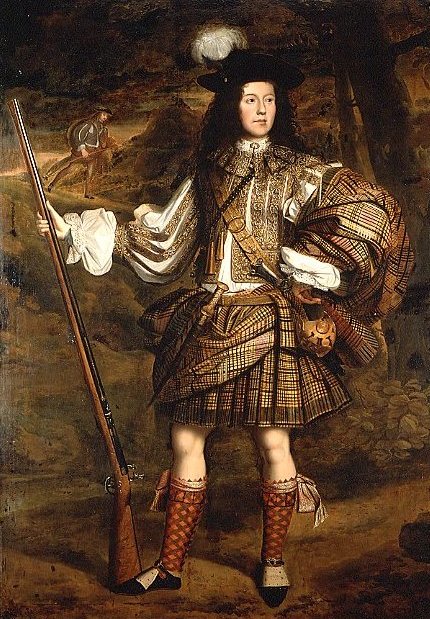Kilt
Yon bonny Scotsman was not the only one to wear a kilt, it is now believed that the ancestral form of the kilt or the 'Belted Plaid' was also worn in Ireland. The kilt is a knee-length garment with pleats at the rear, originating in the traditional dress of men and boys in the Scottish Highlands of the 16th century. Since the 19th century it has been associated with the wider culture of Scotland in general, or with Celtic (and more specifically Gaelic) heritage elsewhere. It is most often made of woollen cloth in a tartan pattern. the Irish kilt, based on the Scottish garment but traditionally made in a single solid color
Pletting and Setting
A kilt can be pleated with either box or knife pleats. A knife pleat is a simple fold, while the box pleat is bulkier, consisting of two knife pleats back-to-back. Knife pleats are the most common in modern civilian kilts. Regimental traditions vary. The Argyll and Sutherland Highlanders use box pleats, while the Black Watch make their kilts of the same tartan with knife pleats. These traditions were also passed on to affiliated regiments in the Commonwealth, and were retained in successor battalions to these regiments in the amalgamated Royal Regiment of Scotland. Pleats can be arranged relative to the pattern in two ways. In pleating to the stripe, on of the vertical stripes in the tartan is selected and the fabric is then folded so that this stripe runs down the center of each pleat. The result is that along the pleated section of the kilt (the back and sides) the pattern appears different from the unpleated front, often emphasisng the horizontal bands rather than creating a balance between horizontal and vertical. This is often called military pleating because it is the style adopted by many military regiments. It is also widely used by pipe bands.
In pleating to the sett the fabric is folded so that the pattern of the sett is maintained and is repeated all around the kilt. This is done by taking up one full sett in each pleat, or two full setts if they are small. This causes the pleated sections to have the same pattern as the unpleated front. Any pleat is characterized by depth and width. The portion of the pleat that protrudes under the overlying pleat is the size or width. The pleat width is selected based on the size of the sett and the amount of fabric to be used in constructing the kilt, and will generally vary from about 1/2" to about 3/4". The depth is the part of the pleat which is folded under the overlying pleat. It depends solely on the size of the tartan sett even when pleating to the stripe, since the sett determines the spacing of the stripes. The number of pleats used in making kilts depends upon how much material is to be used in constructing the garment and upon the size of the sett. The pleats across the fell are tapered slightly since the wearer's waist is usually narrower than the hips and the pleats are usually stitched down either by machine or by hand.
Accessories
Kilt accessories The Scottish kilt is usually worn with kilt hose (woollen socks), turned down at the knee, often with garter flashes, and a sporran (Gaelic for "purse": a type of pouch), which hangs around the waist from a chain or leather strap. This may be plain or embossed leather, or decorated with sealskin, fur, or polished metal plating. Other common accessories, depending on the formality of the context, include
- belt (usually with embossed buckle)
- jacket (of various traditional designs)
- sgian dubh (Gaelic: "black knife": a small sheathed knife worn in the top of the right hose)
- Ghillie brogues
